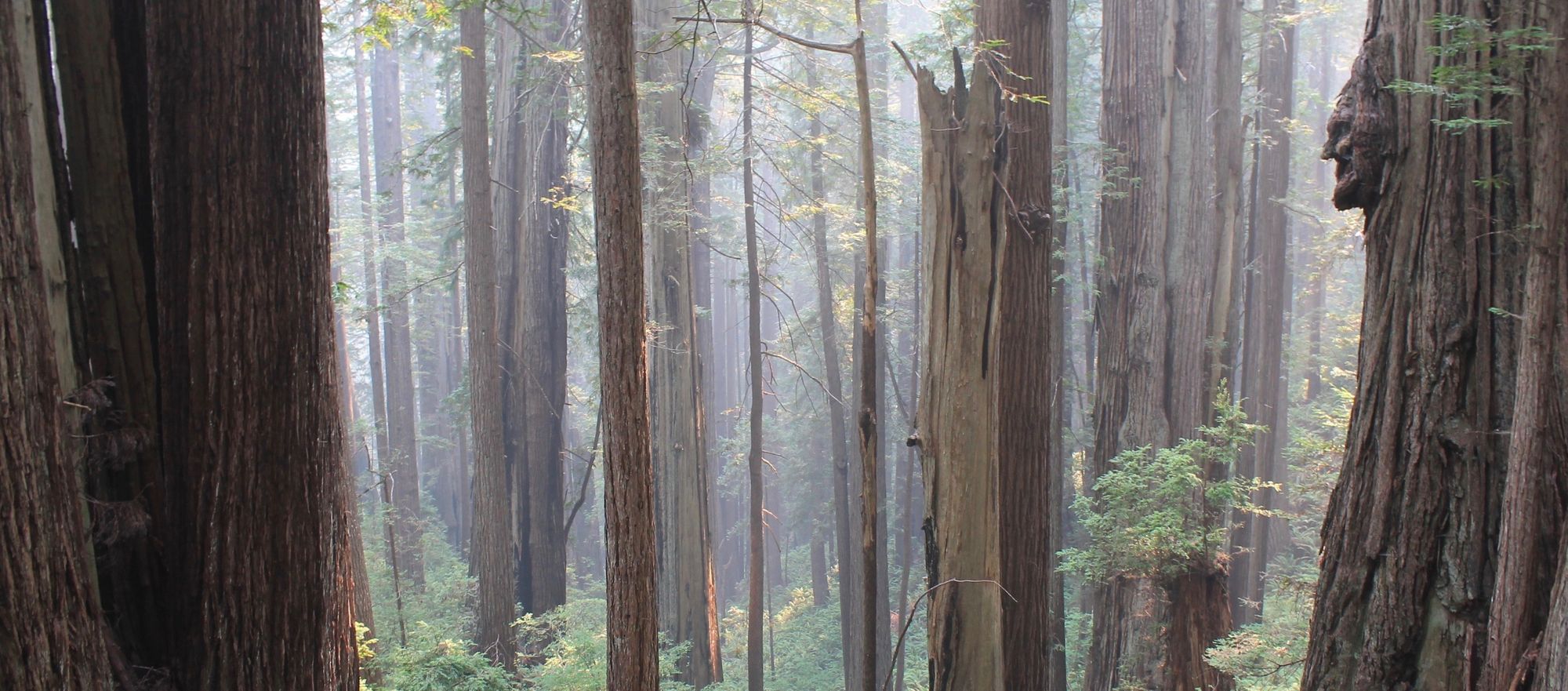Marbled murrelet monitoring

Imagine waking up between 2:00 and 2:30 AM, driving an hour south into private logging lands, then getting on the back of an ATV with a stranger who you've met only once, who proceeds to drop you off at a "trail" and your told to follow the reflectors for a mile or two until you see a bunch of them in one area. That location is where you'll be standing for the next hour staring straight up into a small hole in the redwood canopy talking into a tape recorder. This sit the process of conducting for the surveys for the endangered marbled murrelet (Brachyramphus marmoratus). These seabirds have been a cornerstone species for conservation on the Pacific coast of the United States and Canada. Marbled murrelet populations declined throughout the 19th and 20th centuries likely due to loss of nesting sites. Unline most seabirds that nest of seaside cliffs, murrelets will travel dozens of miles inland and lay their eggs on a platform like tree branch. Suitable platforms are wide required large branches. Hence, there is a positive correlation between stand age and suitable nesting habitat; conservaing old-growth forests, conserves the marbled murrelet. That is why logging companies from San Fransisco to Juneau are required to adhere to strict protocols for mointoring and logging around murrelet nesting habitat.
I spent the summer of 2015 working for Brit O'Brien at O'Brien Biological Consultants who held to contract to survey marbled murrelets for the Humboldt Redwood Company in Scotia, California. I am under the impression that most marbled murrelet monitoring is conducted by small contract consulting companies this this one. I had to complete a week-long training course, which culminated in a practical exam at Redwood National Park. The flocks of murrelets at the park were impressive and gave me a taste for what the populations must've been like. The awkwardly biuld murrelets looks like dozens of flying potatos bobbing across the morning dawn sky. Upon completion of the training, I immediately joined Brit in the field. Surveys began 45 minutes before sunrise and we were based out of Arcata/Eureka, California roughly 1 hour north of Scotia. Survey stations were scattered throughout the property and each station had to tbe surveyed a certain number of times throughout the summer so Brit would drop me off via the truck or ATV where I would hike anywehre fromm 100-yards to 3-miles into the redwoods to find my station. One memorable morning my headlamp died as I was walking across a downed redwood over a ravine. It was so completely dark I could not see my feet and very carefully shuffled across the log. Once at the station I would take out my audio recorder and describe the conditions at the station that day. Then you watch the morning sky through a small hole in the canopy and listen for the signature "keer" call of the murrelet. Mating pairs of murrelets take turns tending their eggs/fledgelings; the male will leave the nest in the evening and fish all night returning in the morning when the female leaves to fish during the day while the male tends the nest. I was lucky enough on my first survey to identify a nesting tree as I observed an individual murrelet circling a partifular tre before disappearing into its branches. It was a really special experience waking up with the redwoods each day. I learned the pattern in the different bird songs as the morning dawned to the point that I could nearly tell time based on the birds. After the two-hour survey is completed I would transcribe my audio notes onto paper for the companies records. My work day would end around 11:00 am.
